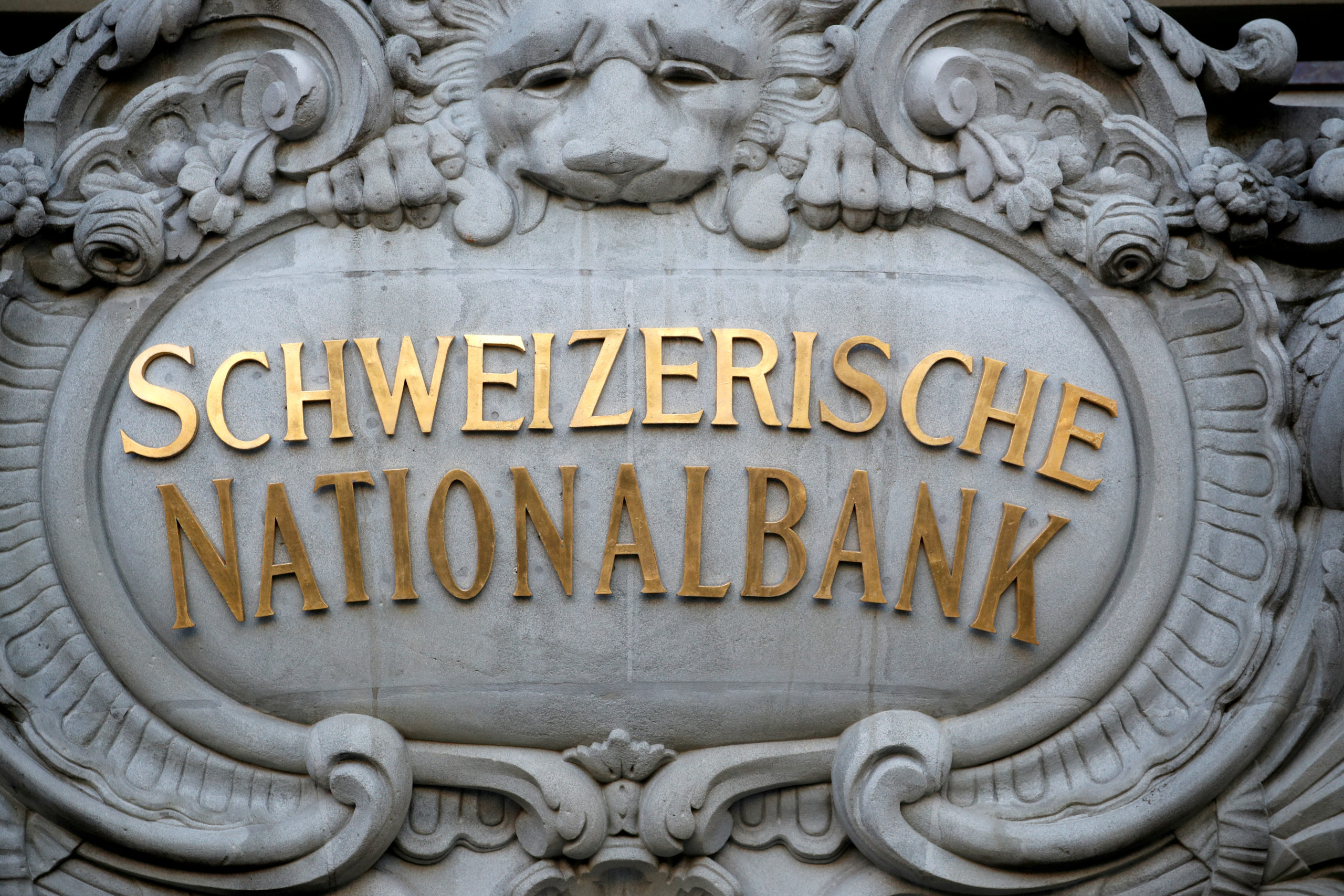SNB seen on sidelines as virus fears push Swiss franc to near three-year high
By John Revill
ZURICH (Reuters) – The Swiss National Bank appeared to remain on the sidelines as the Swiss franc surged to its highest level in nearly three years on Monday, driven by concerns about the spread of the coronavirus.
The franc fell to 1.069 versus the euro as investors spooked by the Chinese outbreak sought safe assets, its strongest value since April 2017.
“This could be because of safe-haven flows into the franc due to the risk-off environment linked to the coronavirus,” said Credit Suisse economist Maxime Botteron.
Demand for other safe-haven assets like the Japanese yen has also risen, while stock markets have fallen, Botteron said.
But analysts said the latest rise in Swiss sight deposits held at the Swiss National Bank (SNB) did not indicate renewed interventions to reduce the franc’s value.
The total level of cash that commercial banks hold with the central bank rose to 587.158 billion Swiss francs ($606.9 billion) last week from 585.868 billion francs a week earlier.
A rise in sight deposits is often seen as a proxy for currency interventions by the SNB to dampen demand for the franc, although the recent rise could also be attributed to seasonal effects.
Sight deposits usually decline in December as banks withdraw cash from the SNB to supply Christmas shoppers. When the cash returns to the financial system in the new year, the banks then increase their sight deposits with the SNB.
“There is no evidence of substantial interventions by the SNB, although there could be a few small actions. This is still the seasonal effect, which I expect to settle down and we will start to see clean numbers from the start of February,” said Botteron.
The SNB, which declined to comment on Monday, is also likely to tolerate a slightly stronger Swiss franc, especially after Switzerland appeared on a U.S. Treasury watch list of potential currency manipulators this month.
“The SNB reduced currency interventions towards the end of last year, and it does not want to provoke the U.S. Treasury at the moment,” said UBS currency strategist Thomas Flury.
The fluctuations in sight deposits could also indicate banks are adjusting to higher thresholds the SNB has introduced before its negative interest rate of 0.75% applies to money they park with it.
The negative interest rate and currency interventions are the main tools the central bank uses to keep a lid on the franc, whose strength hurts Switzerland’s export-reliant economy.
“I think the SNB is probably not intervening at the moment, said Flury. “As far as I understand it is the banks going back and forth and working out how to deal with the new tiering and how much more money they can keep with the SNB without incurring the negative interest.”
($1 = 0.9675 Swiss francs)
(Reporting by John Revill; Editing by Toby Chopra)

